Painting Homer (and other) Mallards
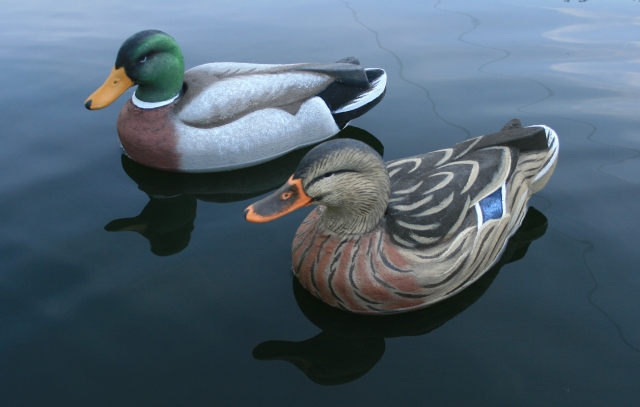
Almost every duck hunter owns some Mallard decoys. There are lots of choices in the marketplace and many factory decoys have been offered for a long time. For those of us who like to keep and use older gear, we probably have some Mallards that could stand some fresh paint. This Tutorial focuses on a newcomer to the world of factory decoys – Homer Decoys from Ohio. To those of us of a certain age, these foam birds fill the niche occupied for most of our gunning lives by Herter’s – originally from Minnesota but no longer in the decoy business. These Homer birds are big, have bullet-proof heads, and are a very nice replica of the live Mallard.
As it happens, I have painted and re-painted scores of Mallards over the past year or so. All use the same approach. So, while most of the photos will show a pair of Homer Mallards I painted in September of 2016, I also show here birds from several other makers.
Coating
Regular followers of my site will notice two regular practices of mine. First is that I have coated these decoys with marine epoxy and fine sawdust. I do this to both put a hard shell over the foam – for long-term durability – and to start my painting on a rough surface – to avoid shine on the finished decoy. I should mention that I have not tried painting or gunning over Homer decoys without this coating; you may find it unnecessary. Having grown up with Herter’s Durlon foam Model 72s and 63s (and 81s and 92s), I know that bodies can take a beating under gunning conditions – usually from anchors. So, I brush on a coat of epoxy from U. S. Composites (www.uscomposites.com) – their 3:1 Medium cure, with a bit of Cabosil to slow running) – and then sprinkle on some fine sawdust from my bandsaw. I have been very happy with the results. The wood particles appear to absorb the epoxy as it cures and so the finish is very much like a coarse sandpaper. It certain provides a great base for the paint; the birds look great on the water, with no shine and rich colors. The only downside I have found in use is that fine muds can be impossible to scrub off, once they find their way into the surface texture. I am experimenting with other particles – ground walnut shells on some Oldsquaw and some ground corncob on my next experiment.
Painting
My other regular practice is to paint with Behr Ultra latex paints from Home Depot. I chose them because 1) I can buy any color in small, sample jar amounts, and 2) I can refer others to the proper colors simply by providing the color name and the code. I buy a bunch of colors in the 8-ounce sample jars but my more-commonly used colors in quarts. The samples come in matte finish but the quarts are available in true flat finish.
I use mostly square, stiff-bristled brushes – which are especially helpful on rough textures. The smaller brushes are used only when needed. As a General Rule: Use the biggest brush you can.
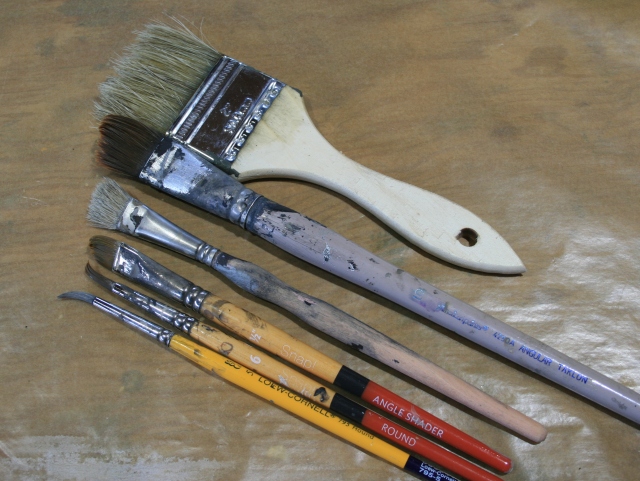
Here is the list of Behr Ultra paints I use on Mallards. It is a long list – because Mallards are the most challenging decoys to paint – but rest assured that many of these colors can be used on other species.
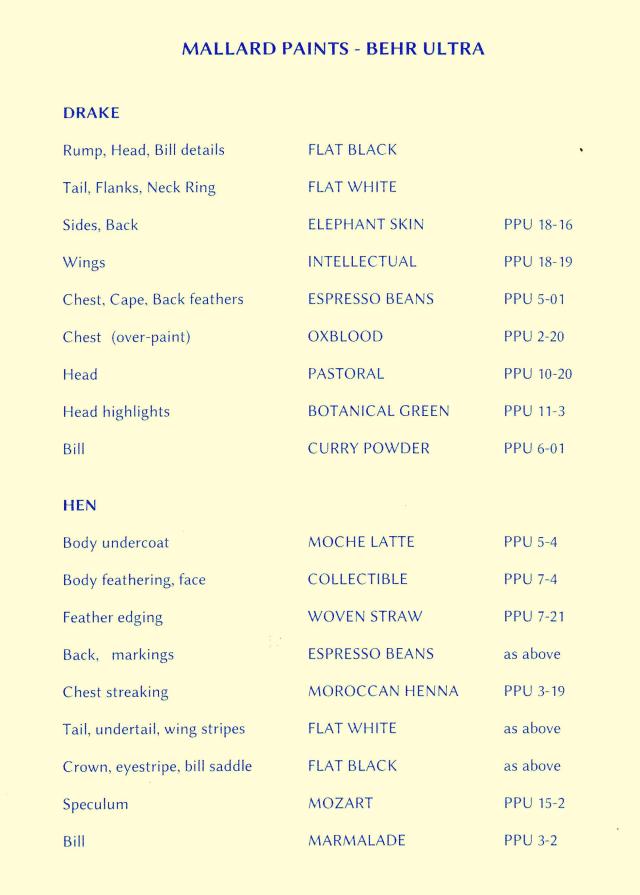
Priming and sealing ?
Finally, you will notice that I do not prime the Homer birds shown here. I believe the epoxy-saturated sawdust particles require no further sealing. However, on other birds, I may seal with spar varnish, oil primer, or latex primer. One thing I always like to do if priming is to approximate the final tones and/or colors in the prime coat. This helps when wear occurs. When the topcoat is scuffed or scratched away, it will reveal no jarring color beneath. Of course, grey primer on the entire bird is also a safe way to go.
Painting the Drakes
Although not a hard and fast rule, it is generally a good idea to begin painting decoys from the aft end – and working forward from there. This is helpful because feathers overlap from the front of any bird, so it is easy to brush forward color patches over aft patches already done.
So, we begin with the Black on the tail section.
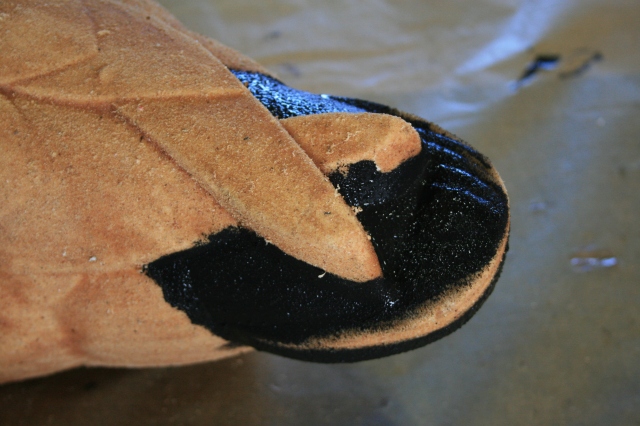
1. Paint upper tail coverts BLACK. I leave tips of tail feathers unpainted now.
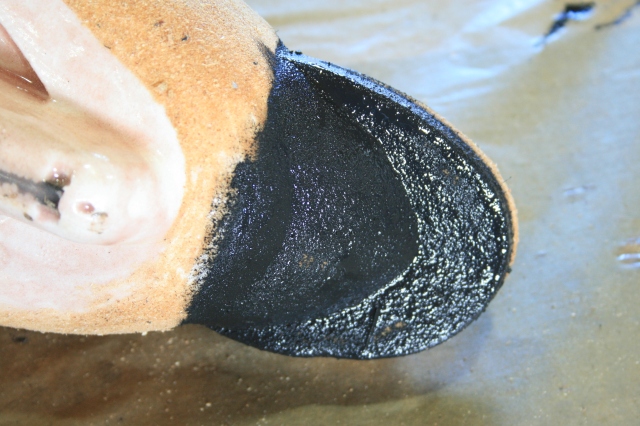
2. Undertail and underside of tail feathers also get BLACK.
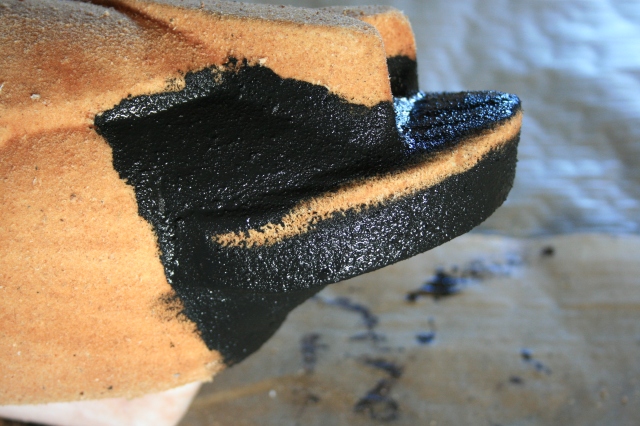
3. Tail feathers will be painted later.
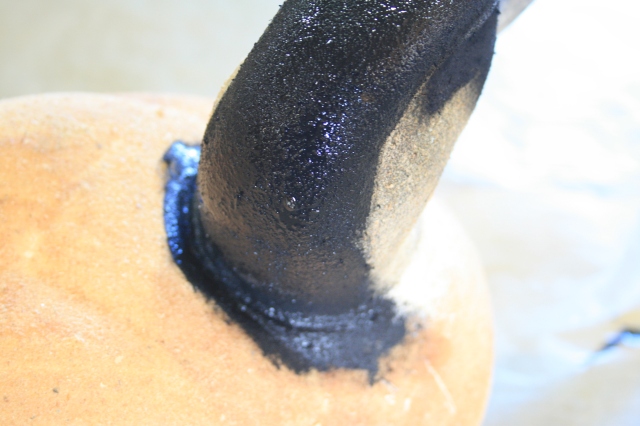
4. Jump to head and paint top and back of head BLACK.
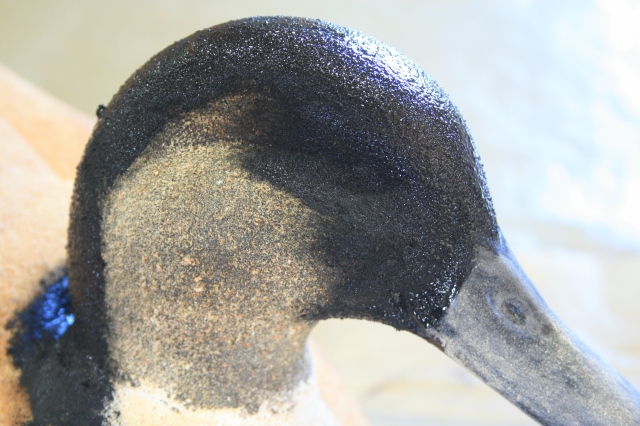
5. BLACK goes through eyes and beneath chin.
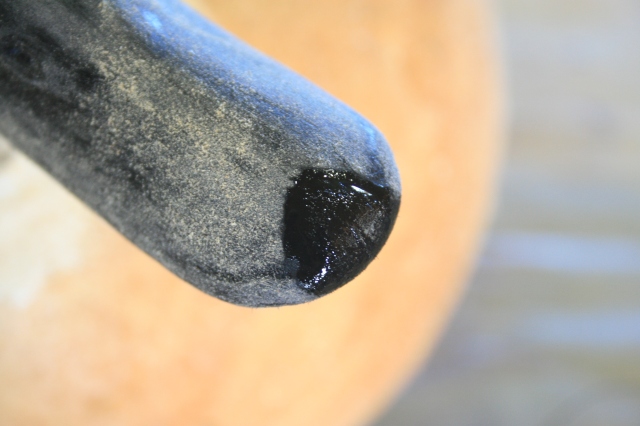
6. Nail on bill.
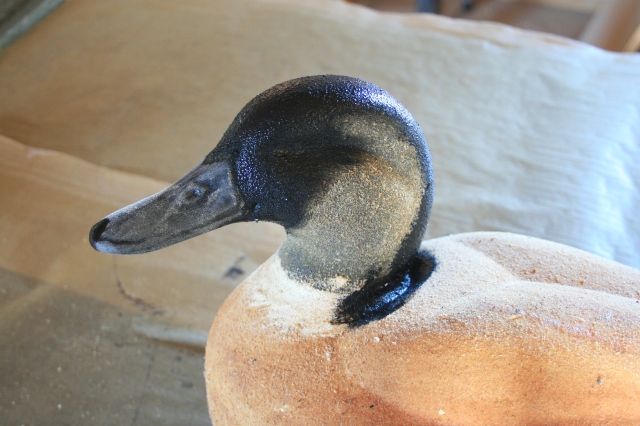
7. This shows all of the BLACK on the head.
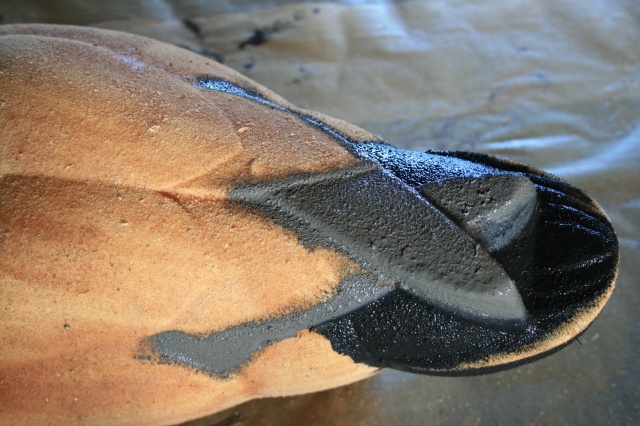
8. The primary groups are painted with INTELLECTUAL.
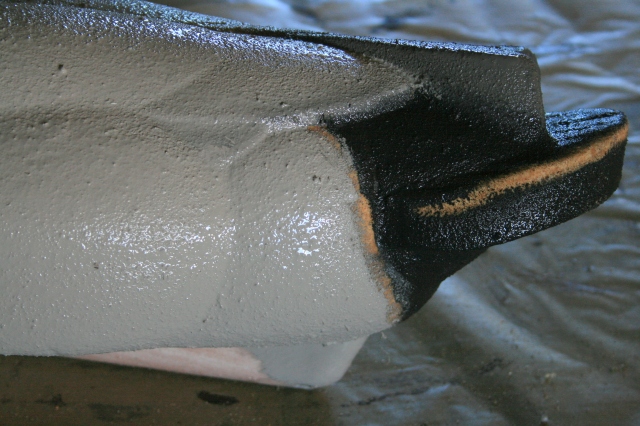
9. The back and sides get ELEPHANT SKIN.
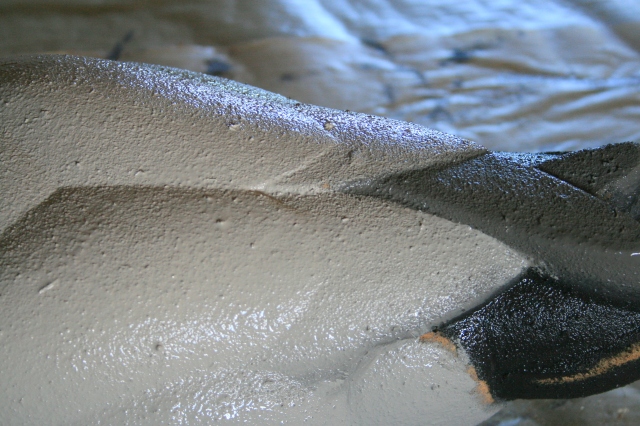
10. Carefully define the tertial groups.
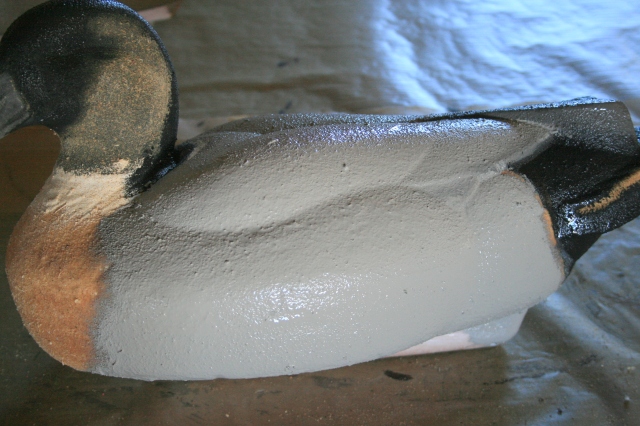
11. The whole mid-section is a warm grey.
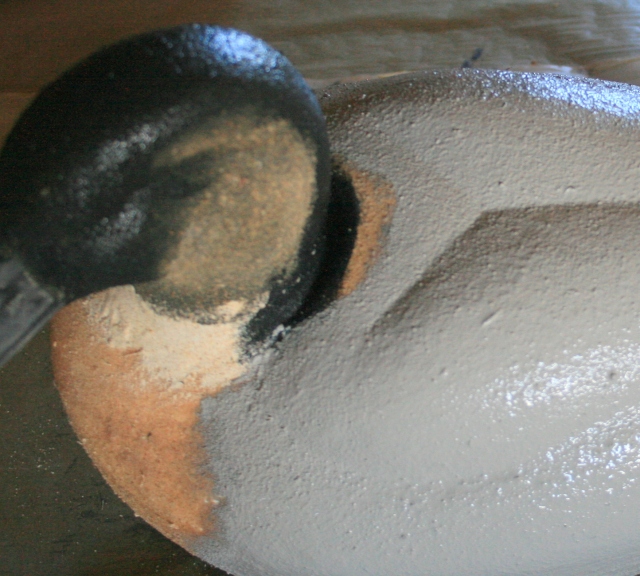
12. The cape – right behind the neck – will get a brown like the chest.
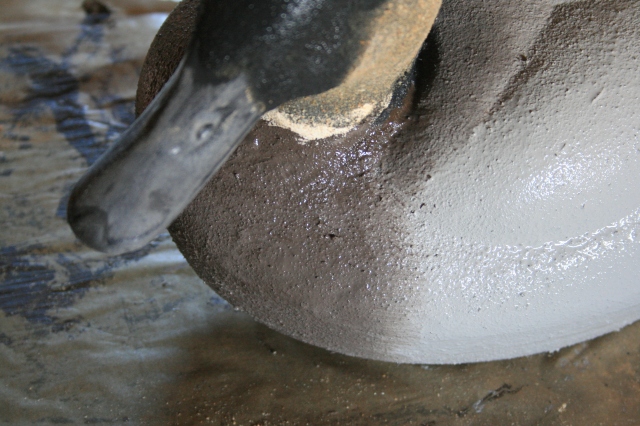
13. The chest and cape get ESPRESSO BEANS blended into the sides and back.
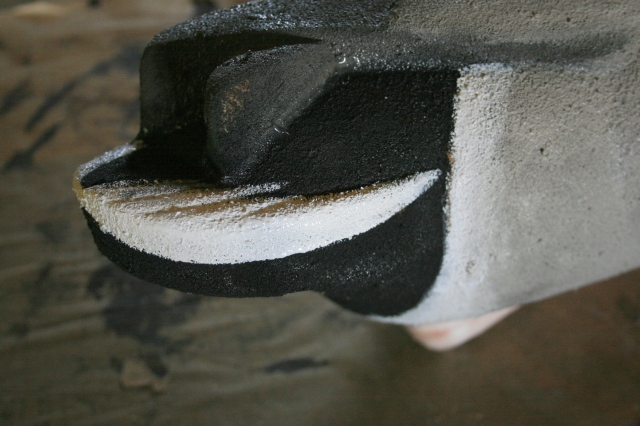
14. The WHITE tail feathers can be painted once the BLACK rump is dry.
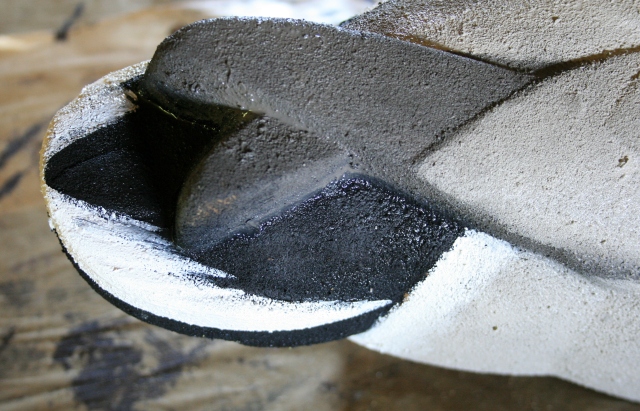
15. The WHITE flanks should stop abruptly at the BLACK rump but grade softly into the IELEPHANT SKIN sides.
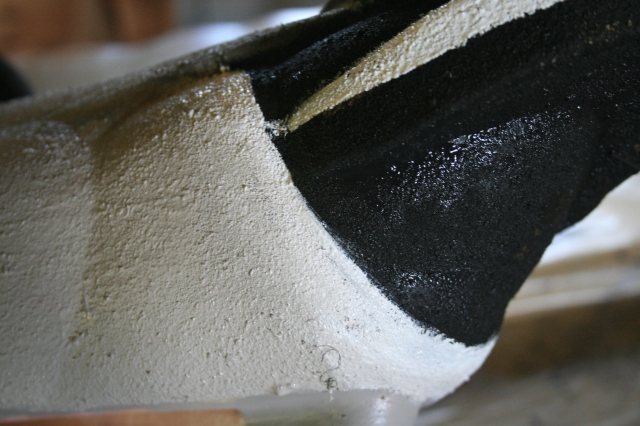
16. Once again, the WHITE stops at the BLACK but grades into the grey ELEPHANT SKIN.
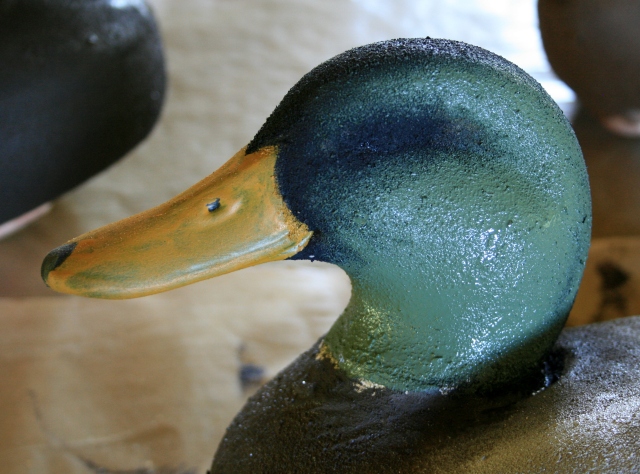
17. The bill gets its first coat of CURRY POWDER and the cheeks, brows and sides of neck get PASTORAL.
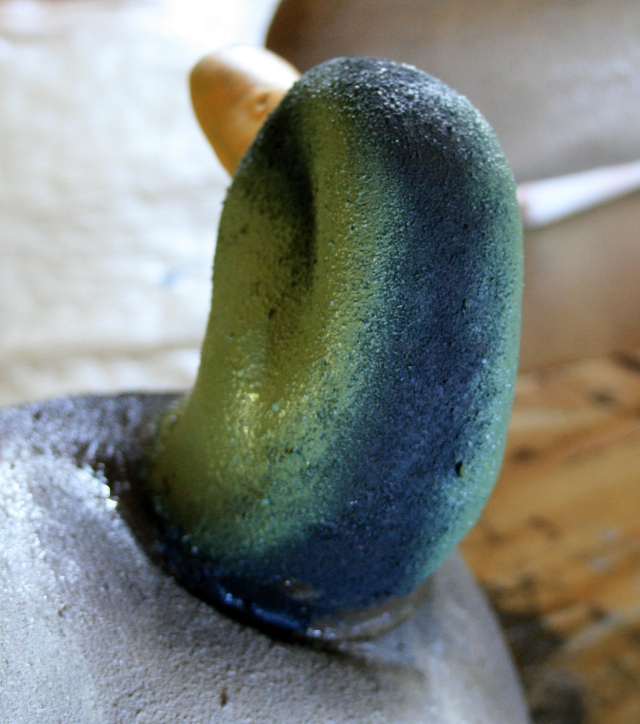
18. Be sure not to cover the BLACK.
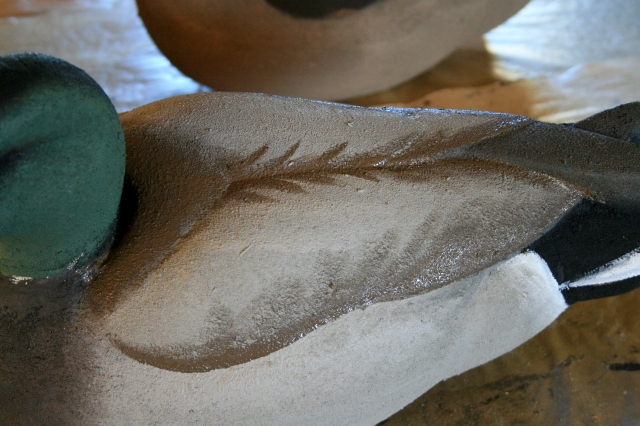
19. The cape fans out with ESPRESSO BEANS.
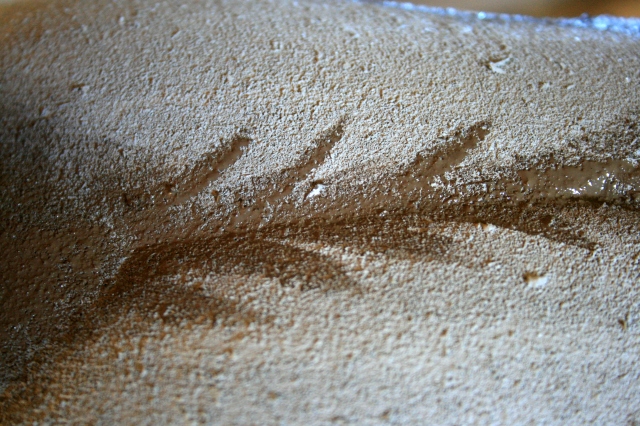
20. Down the middle of the back, paint 4 or 5 “arrows” in ESPRESSO BEANS on each side.
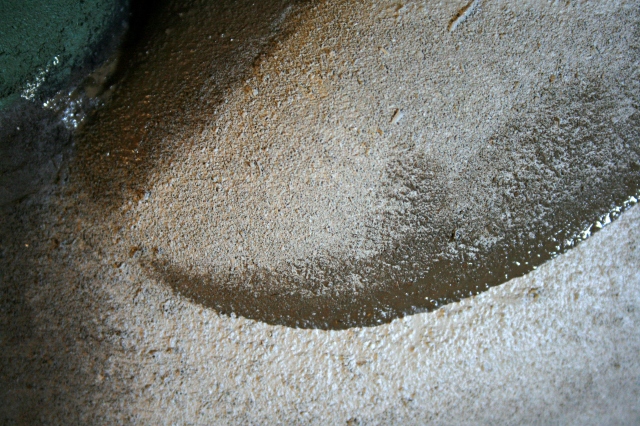
21. The brown is a hard edge with the grey of the sides but softly grades onto the back.
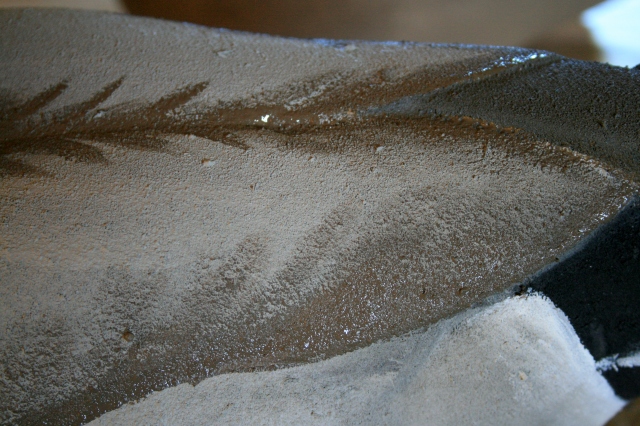
22. The broad tertials get a softened brown.
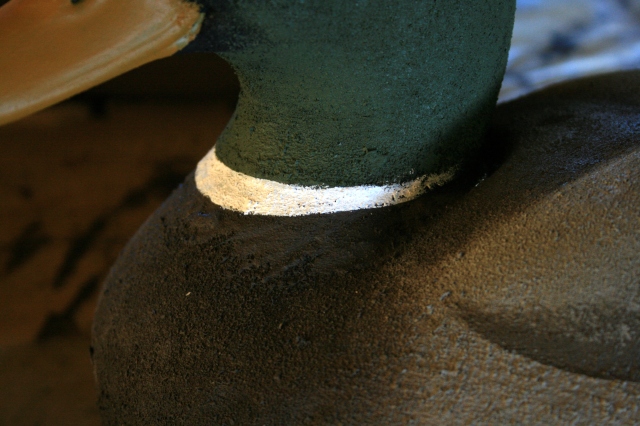
23. The WHITE neck ring is wider forward and tapers aft – and does not meet behind the neck.
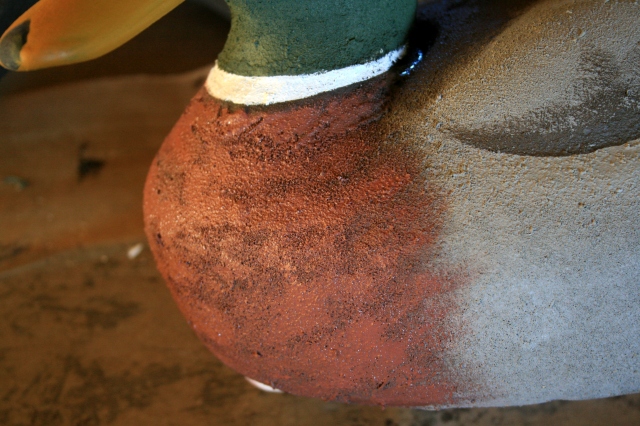
24. OXBLOOD is brushed lightly over the brown chest.
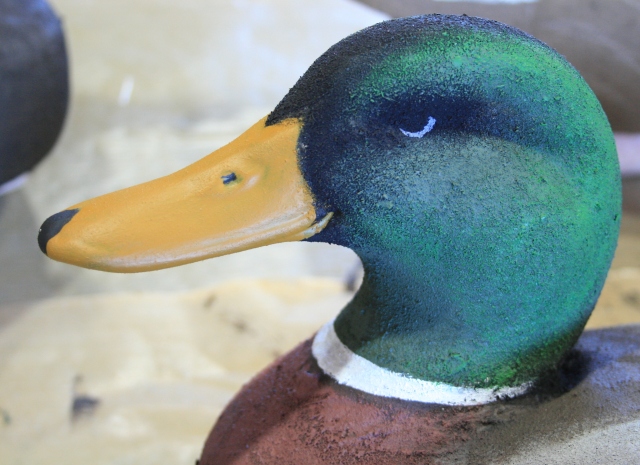
25. The bill gets its second coat of CURRY POWDER. The lower eyelid gets a pale grey or WHITE.
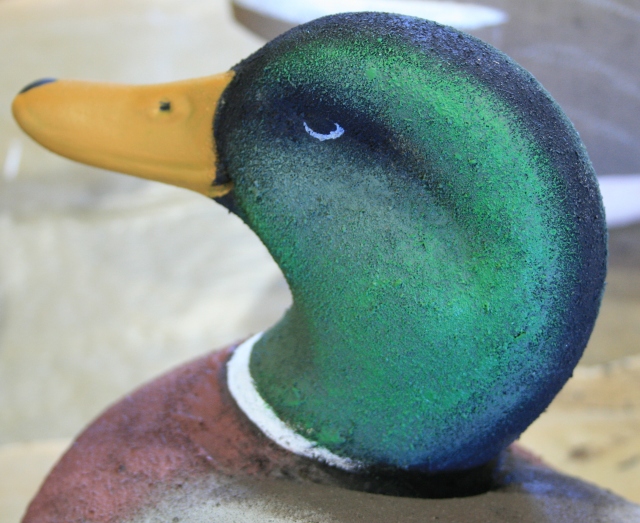
26. The BOTANICAL GREEN highlights should be brushed sparingly on the brows, cheeks and sides of the neck.
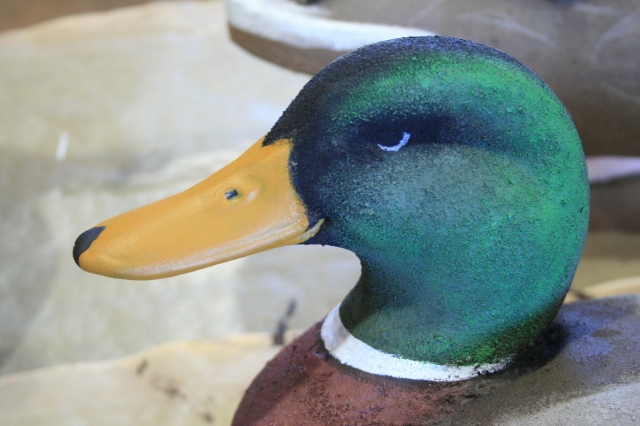
27. Notice how the BLACK remains around the bill and eyes and on the crown.
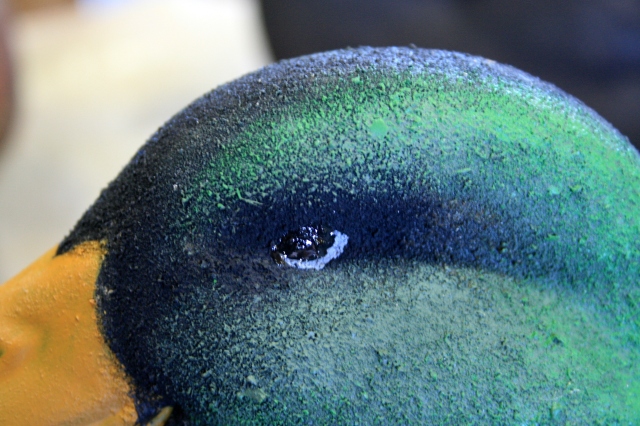
28. A bit of varnish gives a glint to the eye.
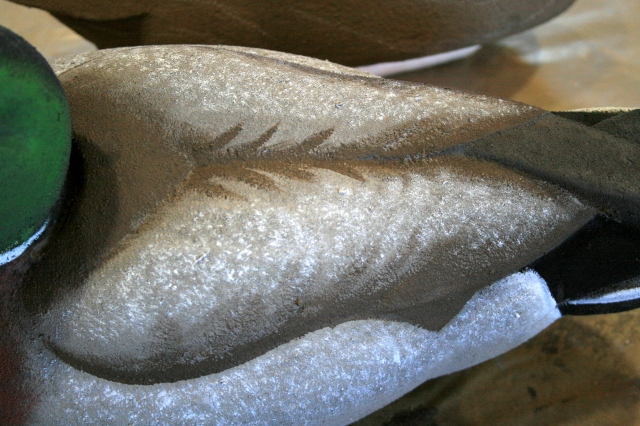
29. WHITE is stippled lightly on the back to suggest vermiculation and give that “silvery” look.
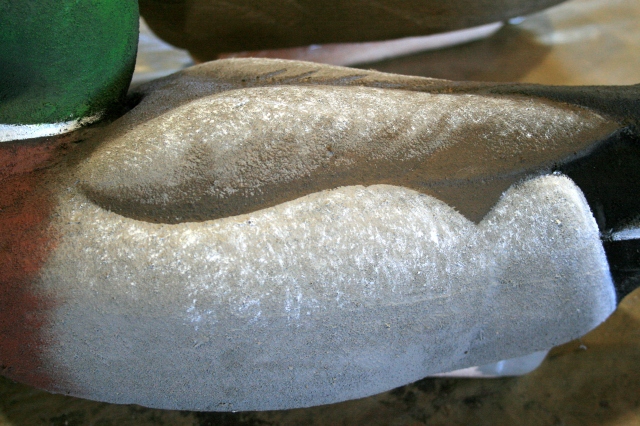
30. The upper half of each side gets similar stippling.
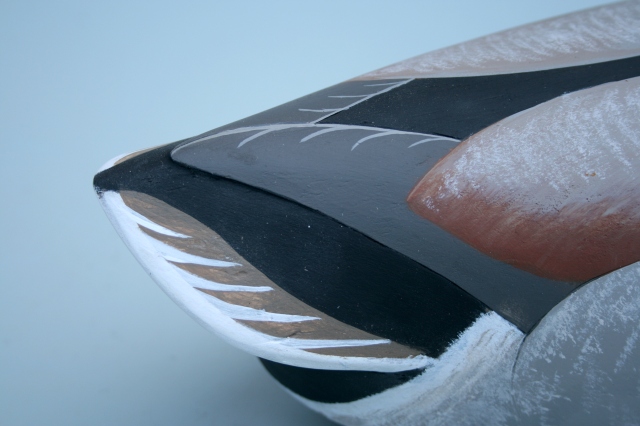
31. On smoother birds, I add details to the tail and wingtips.
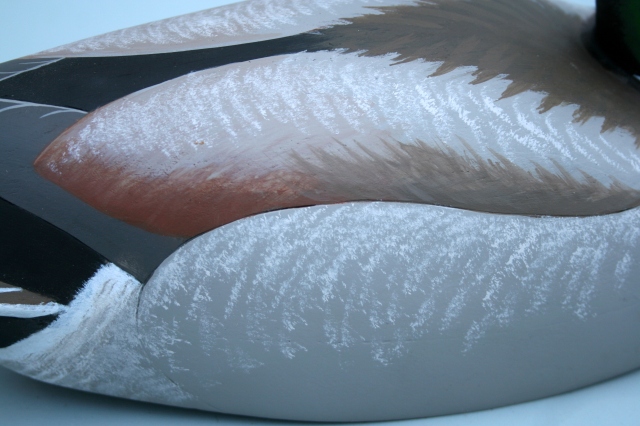
32. The tertials have a reddish cast – so MOROCCAN HENNA can be added here.
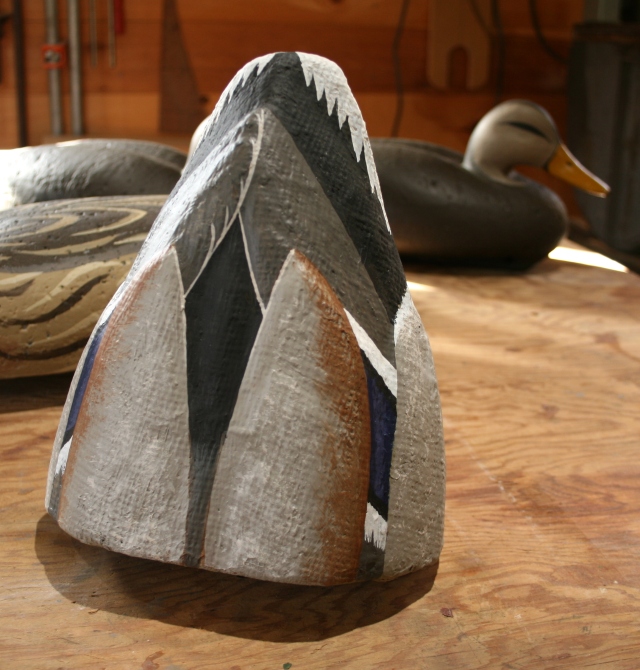
33. I usually show the speculum only on hens – but they can be added to drakes if you like.
The Finished Drake – on the photo bench
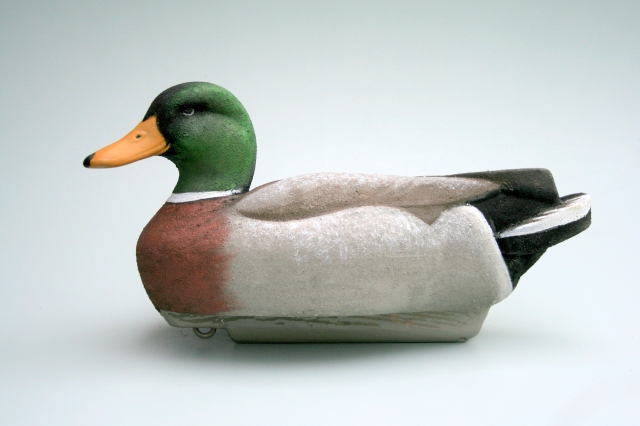
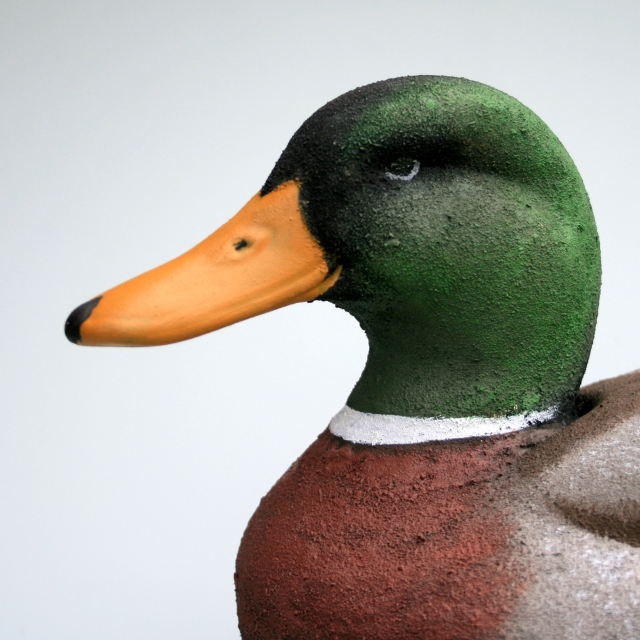
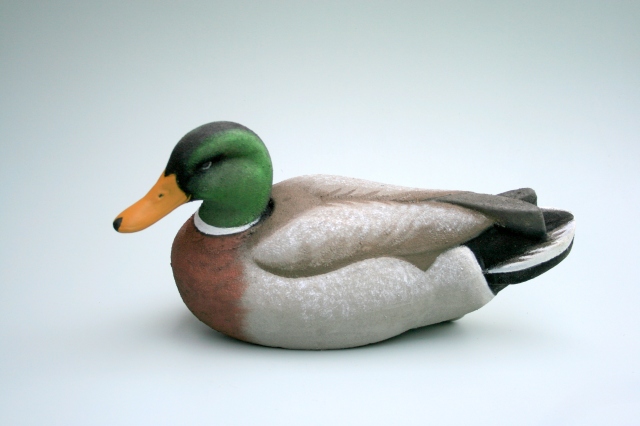
Painting the Hens
Now that you are all warmed up, time to tackle the hens. Puddle duck hens always present a challenge because of their mottled plumage. Solid patches of color do not fool my eye – even at the “half-gunshot away” distance – but it is impractical to paint in every feather on gunning stool. So, an Impressionist approach is needed. The suggestion of a streaked and mottled bird – with the correct areas of light, dark and color, becomes the goal.
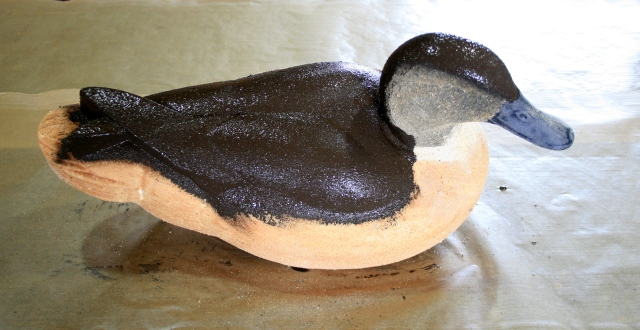
1. The back, primary groups and crown of the head are painted with ESPRESSO BEANS.

2. The rest of the body and face are painted with MOCHE LATTE.
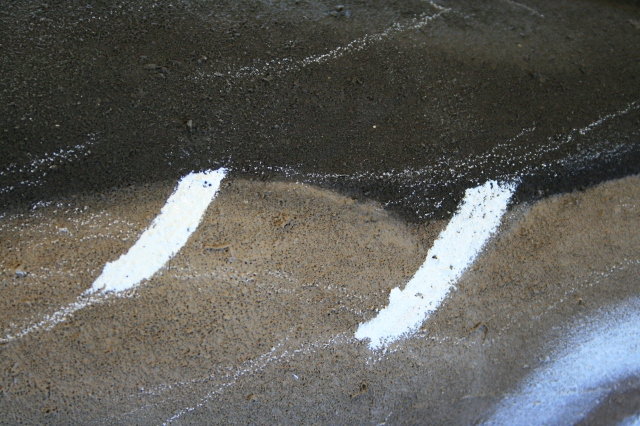
3. The speculum is outlined with its WHITE borders.
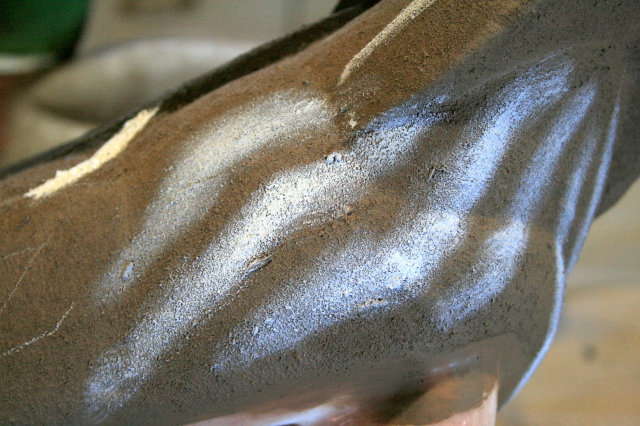
4. Under the tail and on the sides of the rump, several lines of WHITE are put on with a dryish brush.
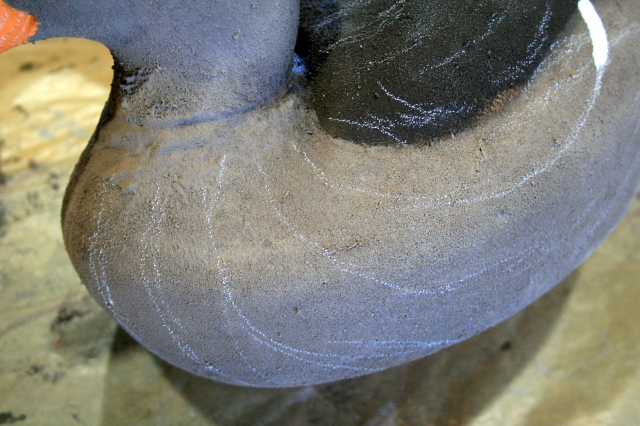
5. The feather tracts on the body begin below the neck and sweep back along the sides. I use just a few – many fewer than on the real bird.
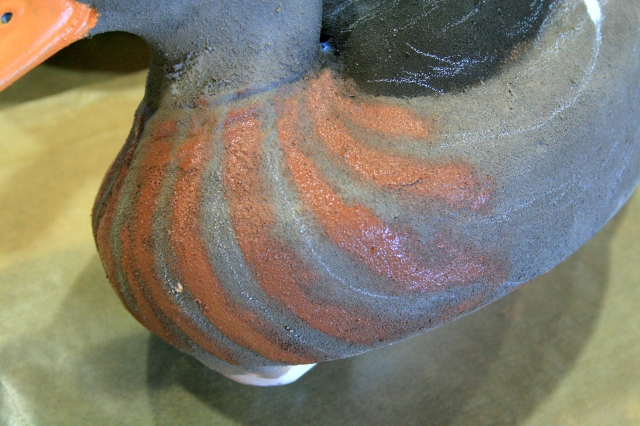
6. The reddish breast can be suggested with either OXBLOOD or MOROCCAN HENNA.
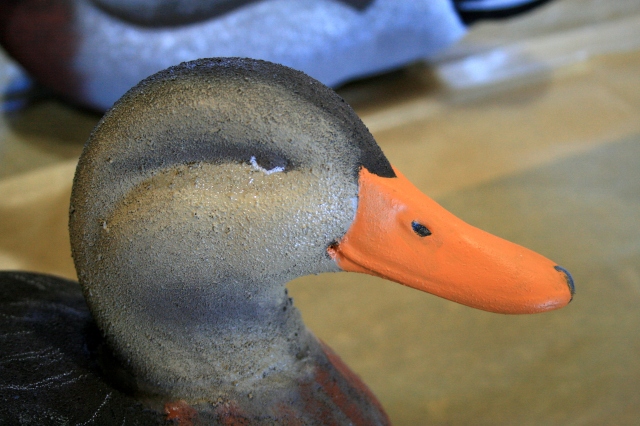
7. The bill gets 2 coats of MARMALADE at any time.
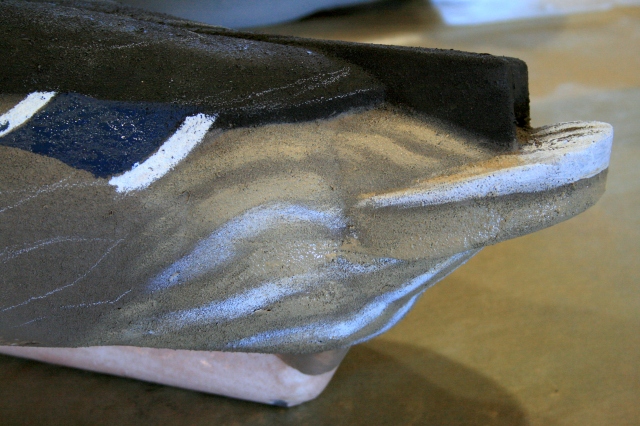
8. COLLECTIBLE is used to define the major streaking – first on the rump and flanks.
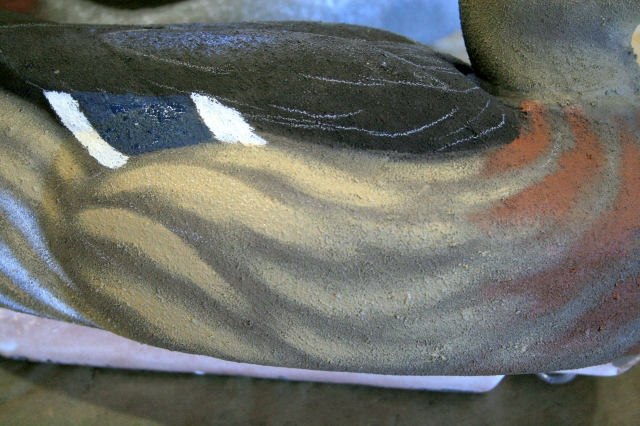
9. The COLLECTIBLE streaking continues along the sides.
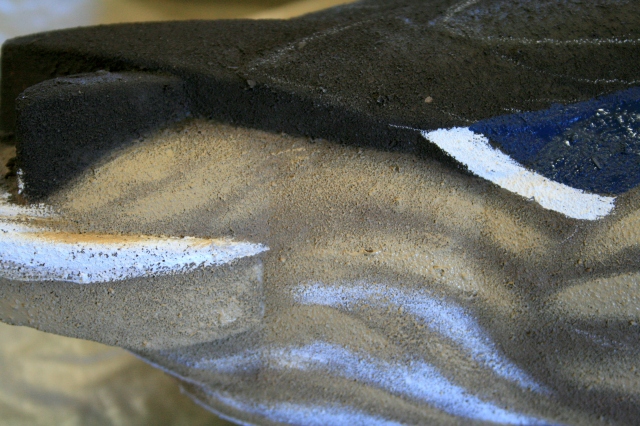
10. The tail feathers are WHITE – but with softened edges.
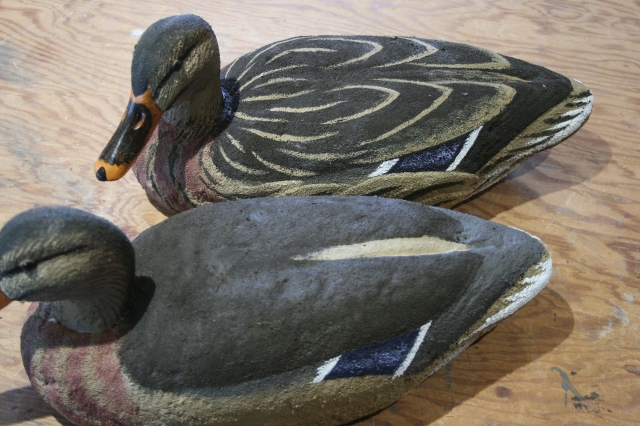
11. These Herter’s Model 63s show the back markings and their layout in chalk.
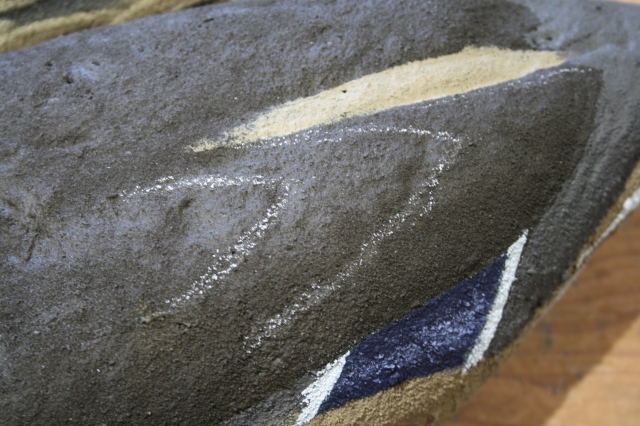
12. The big tertials and their coverts get broad Vs.
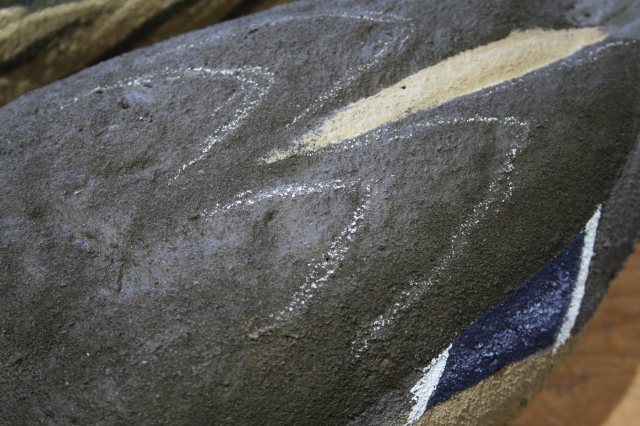
13. Each feather gets smaller as it moves forward.
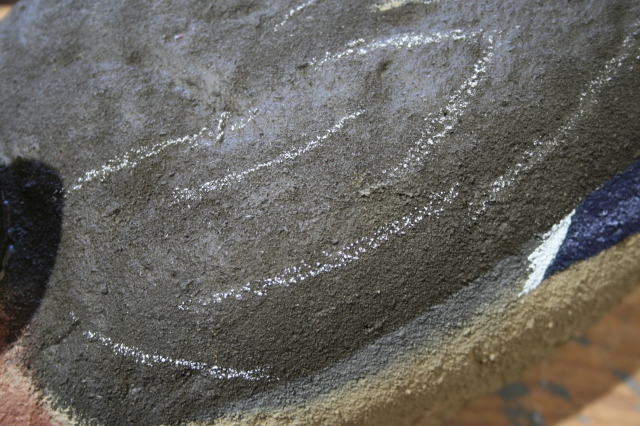
14. I switch to curved streaks.
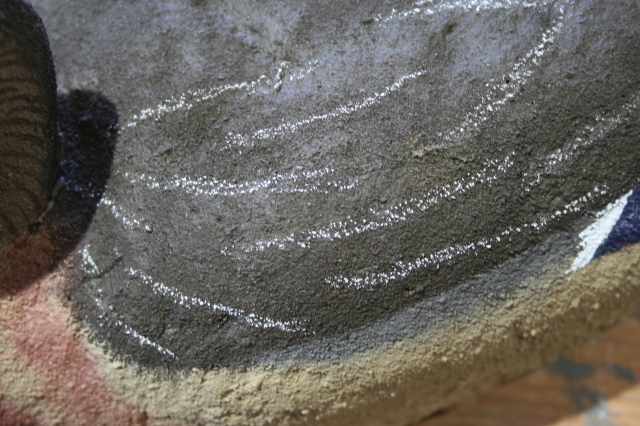
15. The streaks radiate outward on the cape – behind the neck.
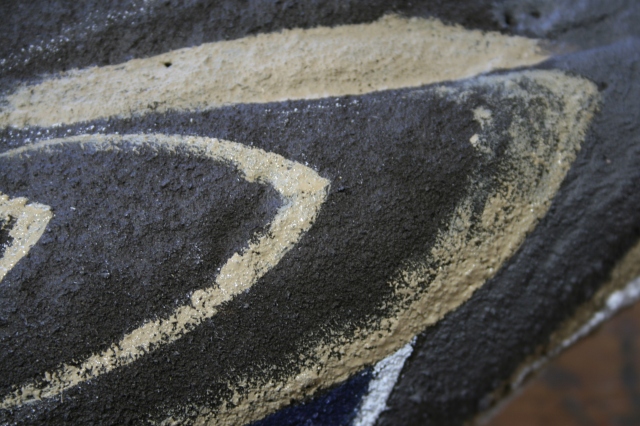
16. I use a 1/4-inch angled brush to paint the edges.
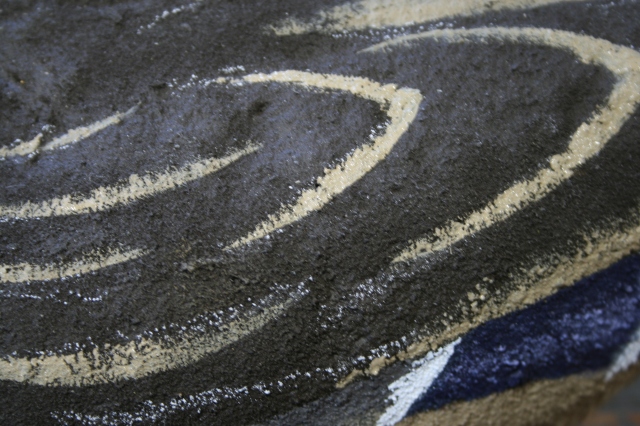
17. The rough surface makes softening the edges easy.
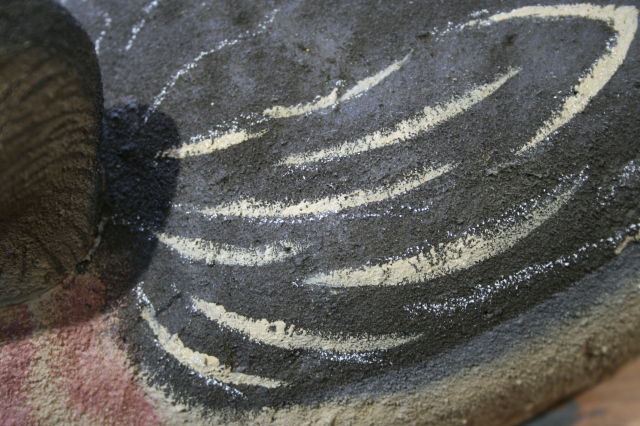
18. Note the shorter, curved streaks coming out from the cape.
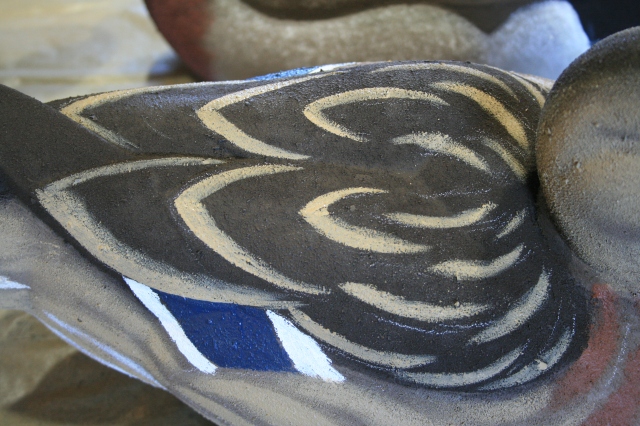
19. Here is the back on the Homer hen.
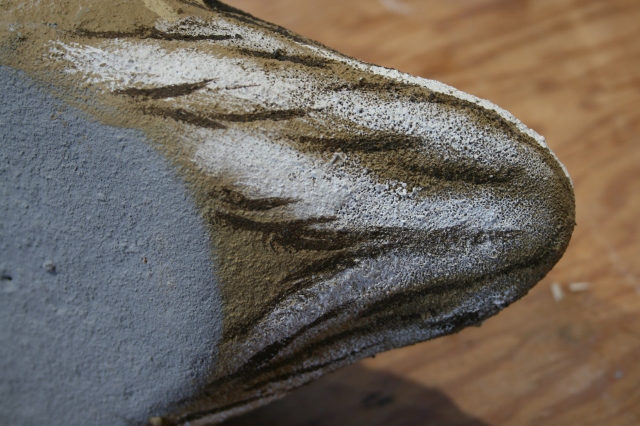
20. Now darker streaks are added with ESPRESSO BEANS.
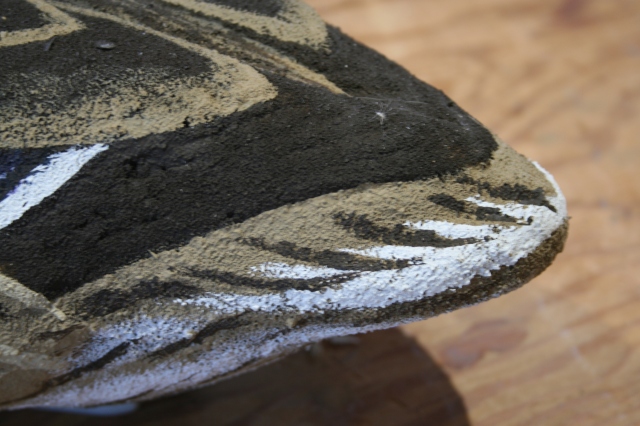
21. Several tail feathers are suggested on each side.
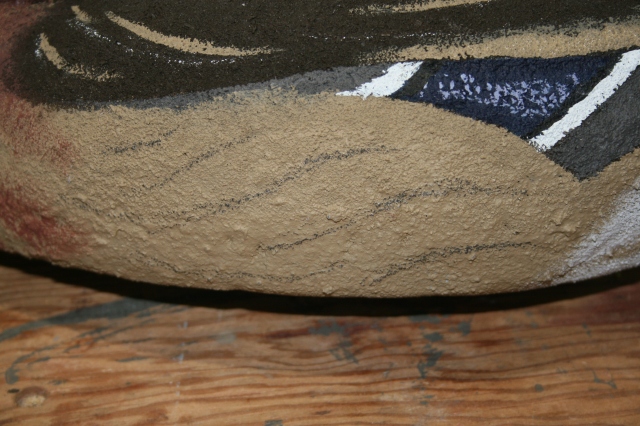
22. Just a few long streaks are needed on each side.
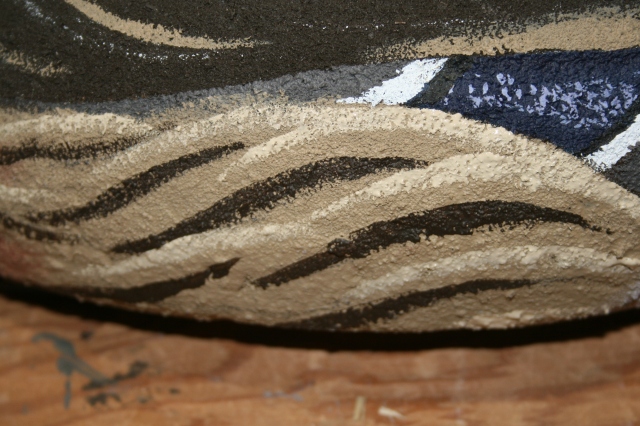
23. The dark streaks are added first – followed by paler edges with WOVEN STRAW on the Herter’s birds.
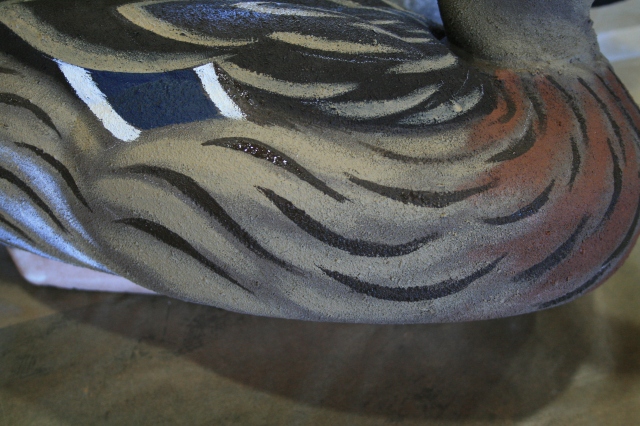
24. No edges are needed on the Homer hen.
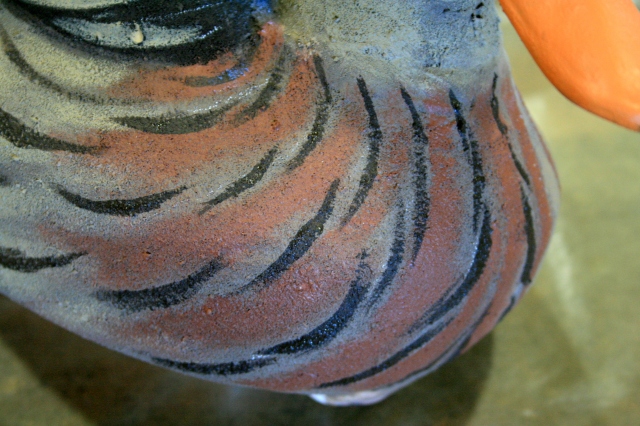
25. A few dark streaks – with ESPRESSO BEANS – accentuate the streaking on the chest.
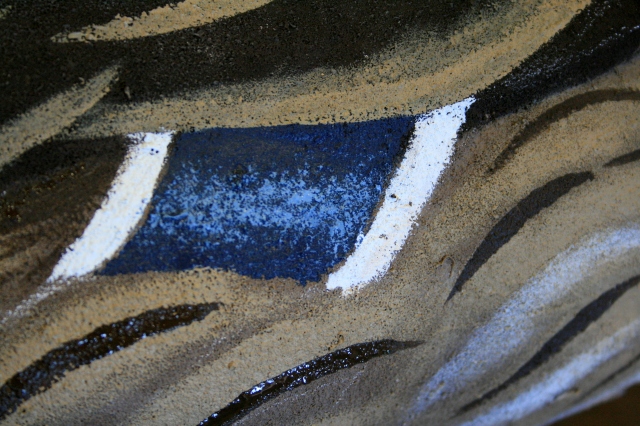
26. The base blue on the speculum is MOZART. I add some WHITE to it for the highlights.
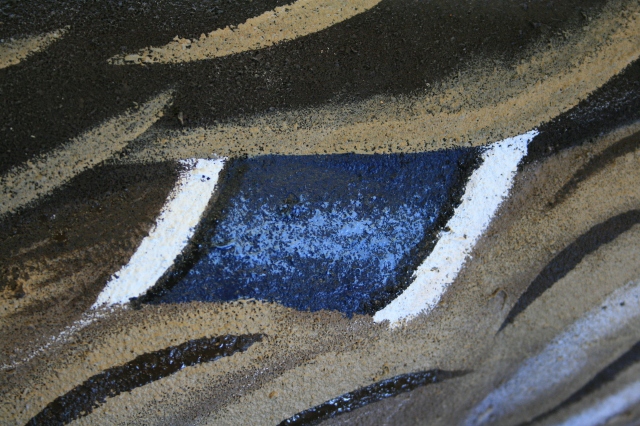
27. The BLACK edges next to each WHITE border help the speculum to “pop”.
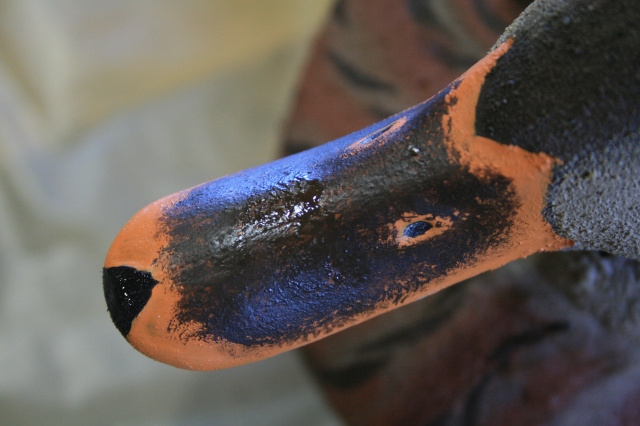
28. I painted the ESPRESSO BEANS saddle onto the bill with soft edges.
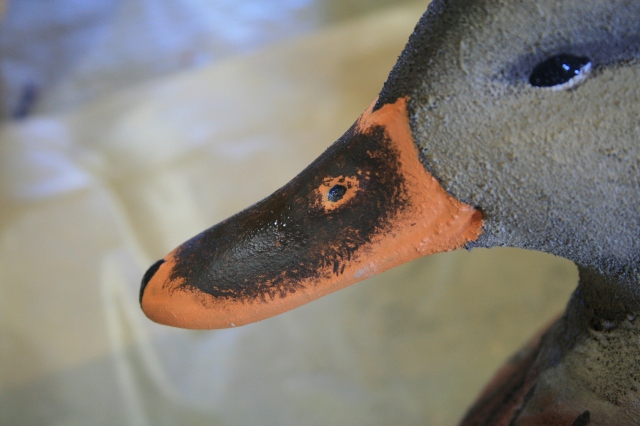
29. A side view of the saddle. Note the pale lower eyelid, too.
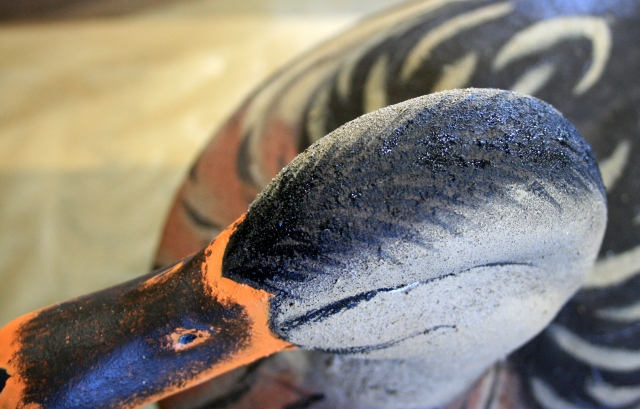
30. BLACK chevrons darken the crown and continue down the back of the neck.
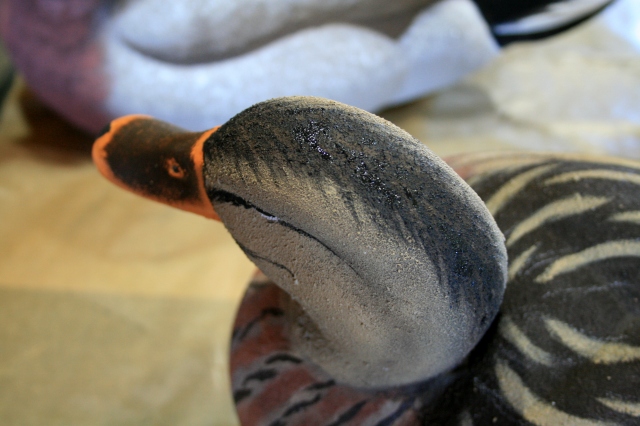
31. The chevrons run out and back.
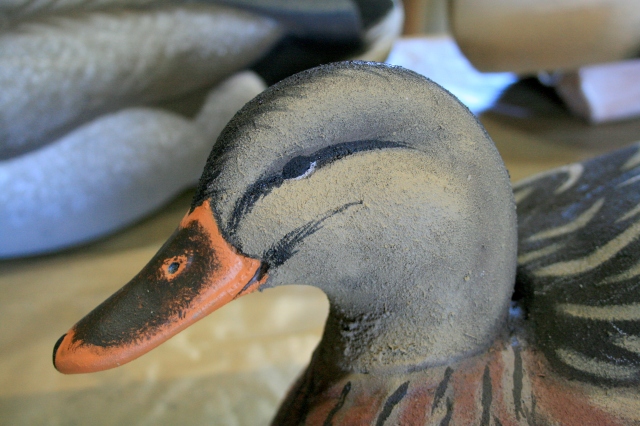
32. The eye-stripe and mustache are also BLACK.
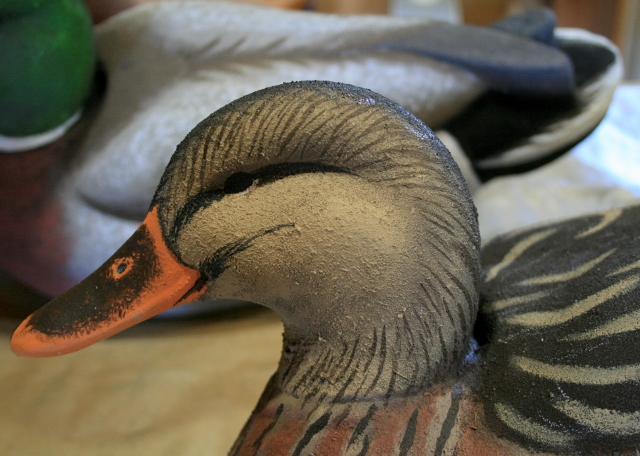
33. Finer streaking is done with dilute ESPRESSO BEANS. The lines run up and back.
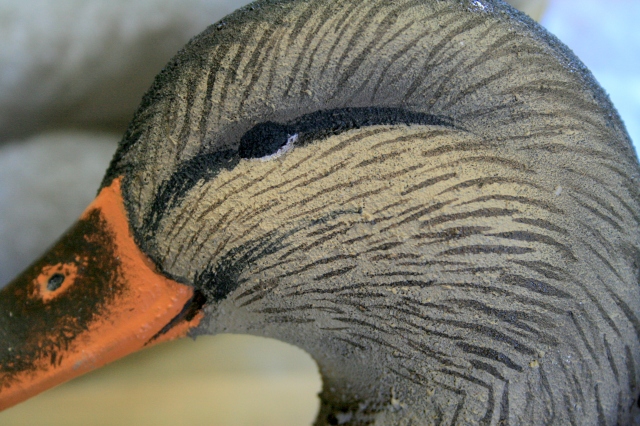
34. On the cheeks, the fine lines get larger as they move aft.
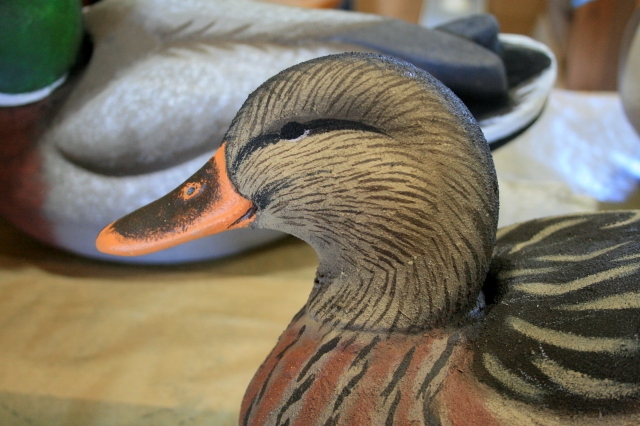
35. Here is the almost-complete head.
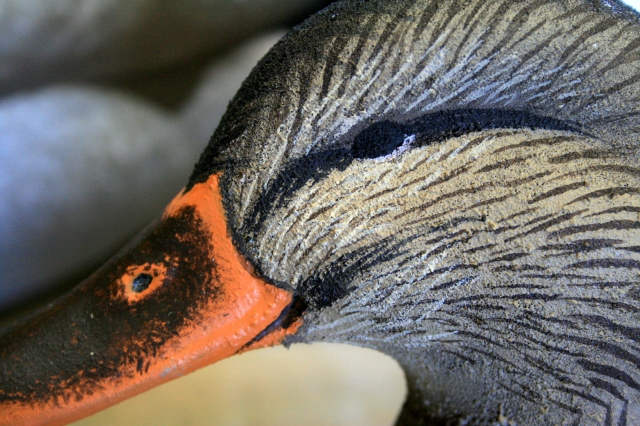
36. Lighter streaks – WHITE or WOVEN STRAW – run diagonally across the other streaks and are confined just behind the bill and over the eye-stripe.
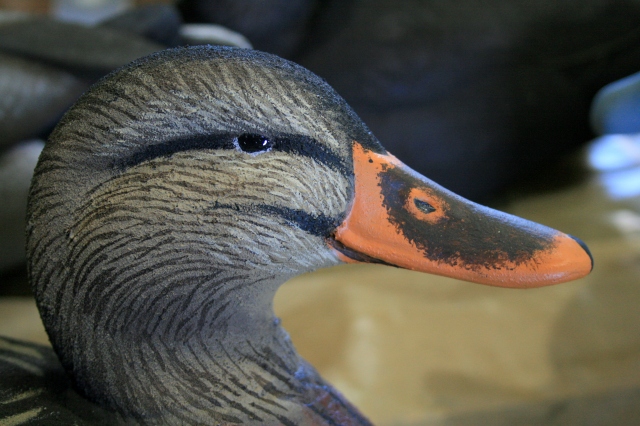
37. Varnish on the eye completes this head.
The Finished Hen – on the photo bench
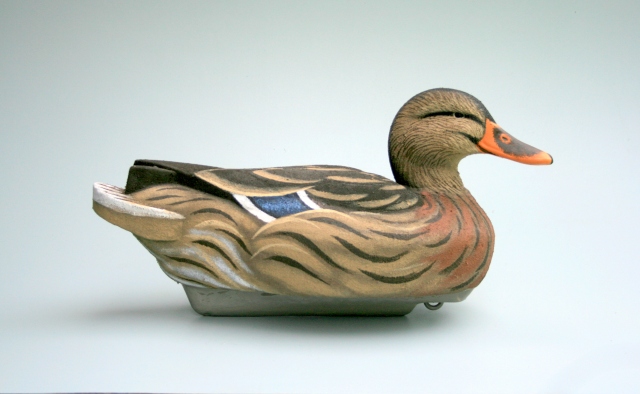
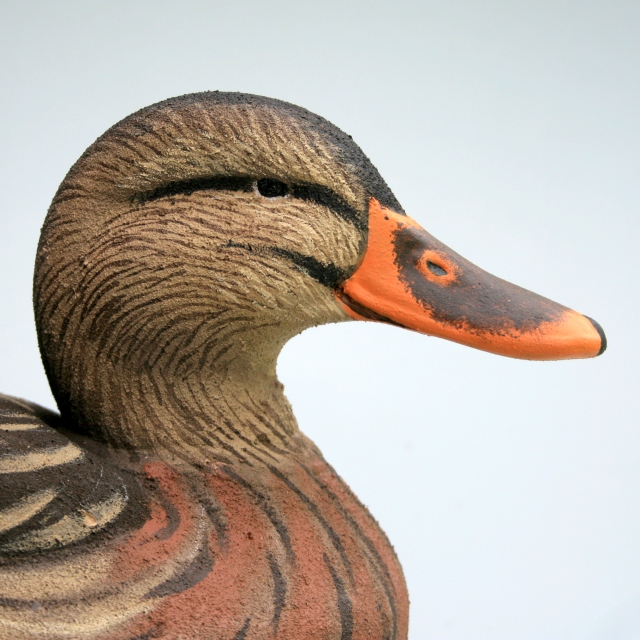
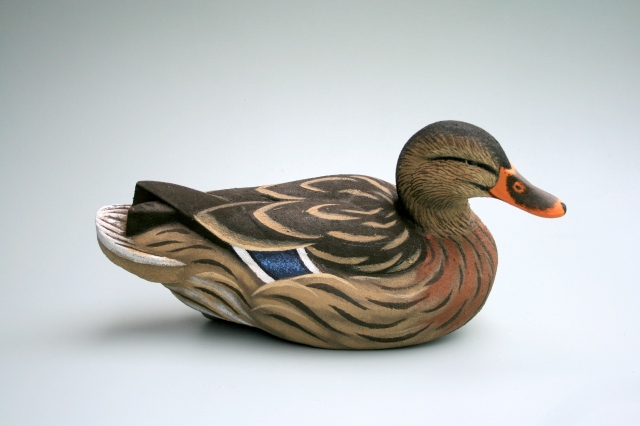
On the Water – where they belong
A pair of Homers….
Some other gunners….
Hope this is helpful!
SJS



























